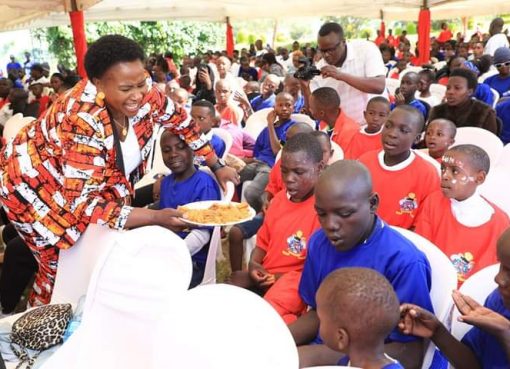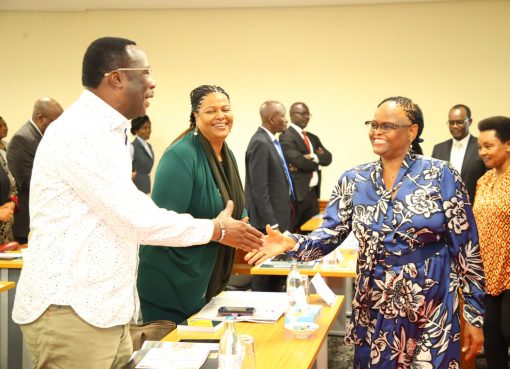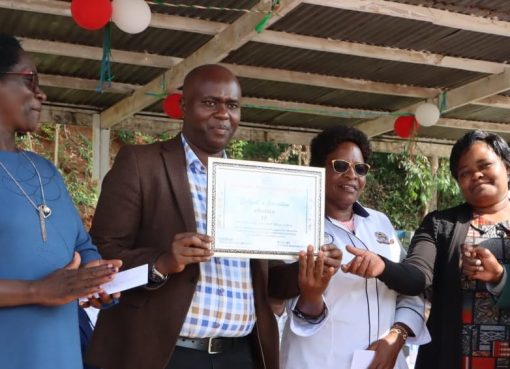
The government and its development partners are set to release Sh1.3 billion to re-start the implementation of a stalled multi-billion gravity irrigation project in Tana River County.
The Kenya Government will release Sh900 million while the development partners will give Sh369 million in 2018/2019 financial year to enable the National Irrigation Board (NIB) to continue with the Sh7.35 billion Bura Irrigation and Settlement Scheme Rehabilitation project.
The development partners include the Government of Kuwait, the Arab Bank for Economic Development in Africa (BADEA) and the Organization of Petroleum Exporting Countries (OPEC) Fund for International Development (OFID).
The announcement by the NIB follows a recent tour of Bura Irrigation Scheme in Tana North Sub County by Deputy President William Samoei Ruto, during which he said the National Government would release the Sh900 million.
“The government will release Sh900 million so that the project can be completed to enable us achieve our agenda of food security in this county,” the DP said in Bura Town.
The Deputy President said the project, among others, would help the government deliver the ‘Big Four’ agenda, which he said were at the heart of the government’s plans for the next five years.
“The Government will significantly increase the level of investment in food security, affordable housing, manufacturing and affordable healthcare for all,” he said.
The project’s implementation progress is at only 30 per cent, five years and nine months since the signing of the contract between NIB and the main contractor, IVRCL Infrastructure Limited of India on February 27, 2013.
The NIB confirmed in a statement via e-mail that in addition to the Sh900 million from the National Government announced by the Deputy President, the development partners would release Sh369 million to re-start the project that is more 38 months behind schedule.
Farmers’ representatives as well as officials of the NIB have said the completion of the project would lower the cost of irrigation and ensure continuous flow of water into irrigation canals.
At inception, the multi-billion project was hyped as a solution to the high cost of irrigation within the Bura Irrigation Scheme, but its implementation has been going at a snail’s speed for almost six years.
The NIB signed an agreement with IVRCL Infrastructure Limited of India, a renowned Indian infrastructure company undertaking water projects, on February 27, 2013, and the project was to be completed within 30 calendar months, meaning that it should have been completed by September 2015.
NIB’s Principal Irrigation Engineer Alexander W. Kuria, in the e-mail message, confirmed that the government would release the Sh900 million this financial year, with another funding from Kenya’s development partners amounting to Sh369 million.
Eng. Kuria says the major causes of delay to the project implementation included unforeseen land compensation issues that delayed the project implementation for 22 calendar months as the locals demanded to be compensated for the land on which the project was to be implemented.
He also says there was initial slow rate of mobilization of plants and equipment to the site by the contractor as well as delayed payments from the government of Kenya and development partners.
He says the NIB is in the process of engaging a new contractor for the project with a view to ensuring accelerated implementation progress of the balance of works of the project after it terminated its contract with the main contractor.
“The contract for this project between NIB and the Contractor IVRCL LTD of India, has been terminated due to commencement of insolvency proceedings against IVRCL LTD in India as per the relevant Clauses of the Contract agreement,” he says.
Mr. Kuria says the project is necessary as it would lower cost of production by eliminating pumping, which consumes up to Sh5 million monthly (Sh60 million annually) for pumping irrigation water thereby creating sustainability in the Scheme.
He says when completed, the project would help expand the area under irrigation in the Bura Irrigation Scheme from the current 12, 000 acres to 15, 000 acres through opening up of another 3, 000 acres in Masabubu area.
The project, he says, would also ensure availability of irrigation water by abstraction of 11 cubic meters per second of irrigation water throughout the year as opposed to the current 2.7 cubic meters per second through pumping.
The scheme is situated along the bank of river Tana within the high potential lower Tana Basin in Tana River County. It is about 50 kilometers North of Hola Town, the county’s headquarters.
It currently abstracts irrigation water from the river by pumping using diesel-fueled generators and pump sets with a discharge capacity of 2.7 cubic meters per second.
Once the irrigation water is lifted from the river, it flows by gravity through all the distribution system to the farms where farmers use siphons for applying in their fields.
At its inception in 1977, the scheme had targeted to settle approximately 5, 150 families to utilize 6, 700 hectares of irrigation land.
However, irrigation infrastructure covering only 2, 500 hectares was developed due to financial constraints during the initial implementation.
With the assistance of the Government of Kenya, the National Irrigation Board has expanded the scheme to 12, 000 acres.
The scheme was to draw irrigation water from river Tana by gravity system but this was not realized due to inadequate funding at the time, hence the adoption of the pump station as a temporary method of water abstraction while a more sustainable option was to be explored in the future.
However, the use of diesel pumps has been a major limitation in the sustainability and further expansion of the scheme due to high maintenance costs attributed to the cost of diesel and the high silt load in the river that lowered the lifespan of the pumps.
To remedy this, the Government of Kenya signed a loan agreement with Kuwait, BADEA and OFID in 2008 for the rehabilitation project with the intention of developing infrastructure for gravity water diversion and to rehabilitate the existing ones.
The crops being grown in the scheme are Seed Maize (contracted by various seed companies) commercial maize, water melons, onions, tomatoes and cotton among others.
The current irrigable area is 12, 000 acres and with the gravity system, the area would increase to about 25, 000 acres.
The project components include construction of intake on river Tana upstream, conveyance canals and rehabilitation of existing structures, diversion facilities at Korakora site, river bank protection works, sedimentation basin, and connecting the canal with a discharge capacity of 11 cubic metres per second.
They also include the rehabilitation of the main and secondary canal, irrigation and drainage infrastructure as well as the lining of the new canal (26 kilometres) and existing main canal (64 kilometers) to minimise water losses through seepage.
At some point, politicians led residents into demonstrations, claiming they were not consulted before the project was implemented. The residents were also demanding compensation for their land as well as employment opportunities.
By Emmanuel Masha





